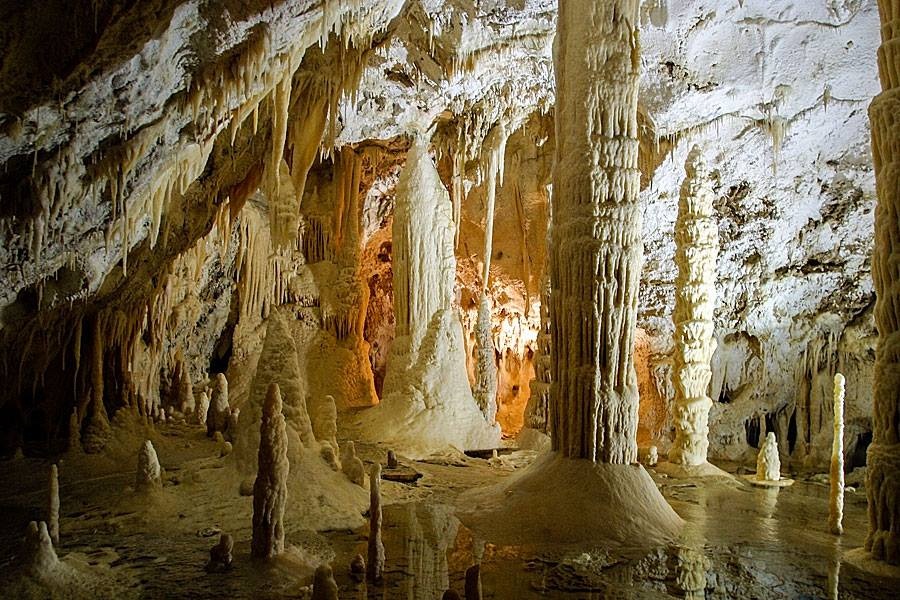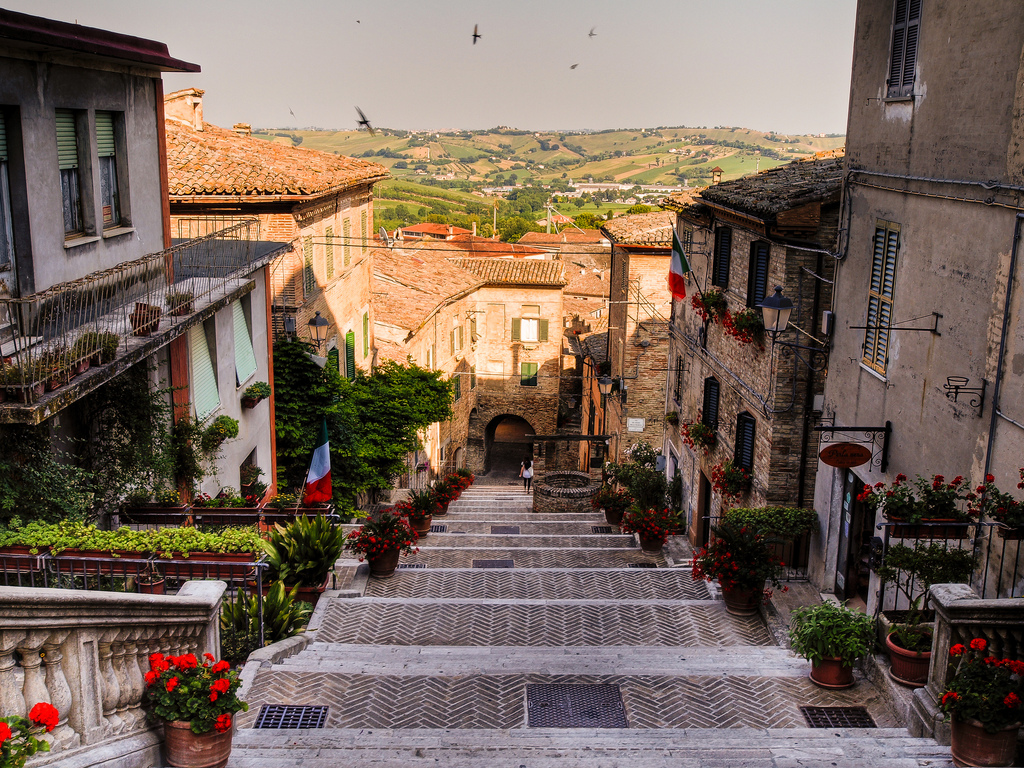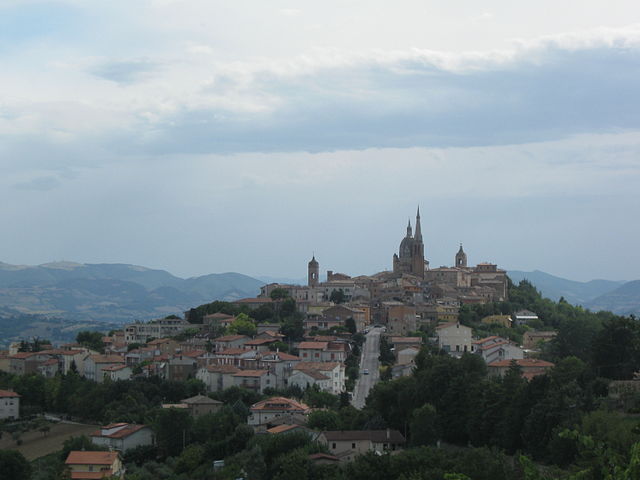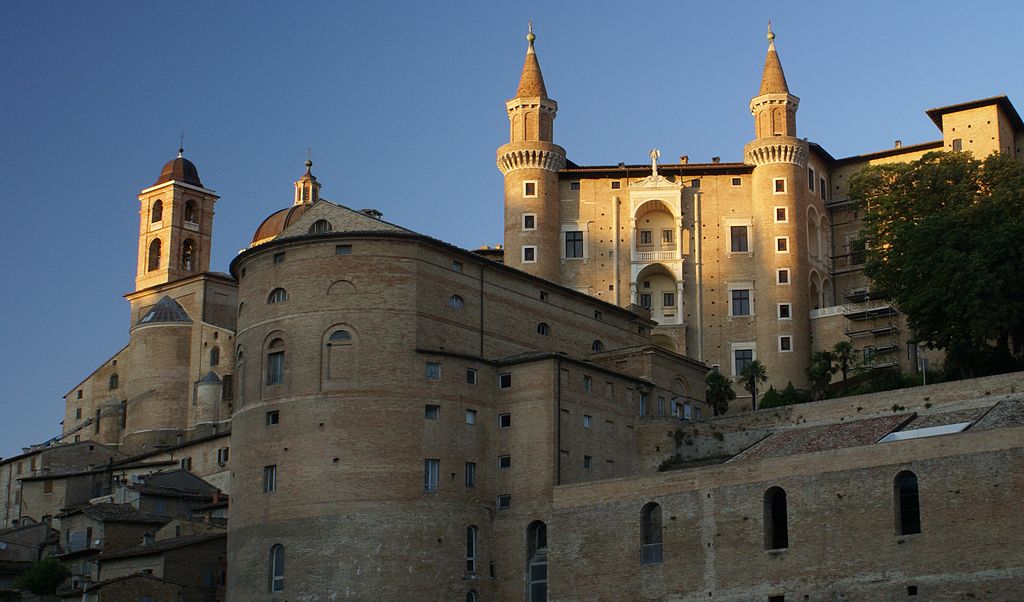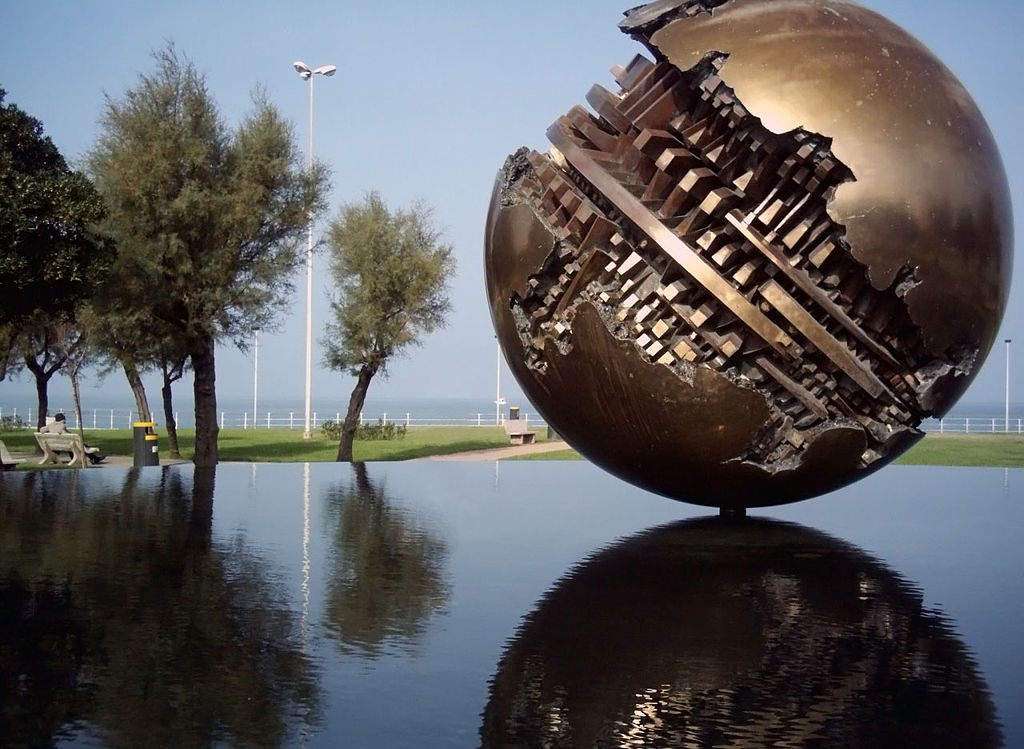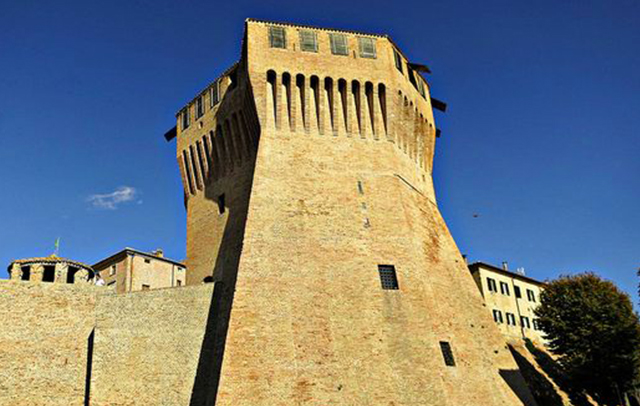Frasassi’s caves
The caves of Frasassi: imagine a huge underground room, lined with stalactites and stalagmites, lit up in art and so big that it could contain the Duomo of Milan. The caves of Frasassi are underground caves within the Regional Natural Park of the Gola della Rossa and Frasassi, in the municipality of Genga in the province of Ancona. The discovery of the caves of Frasassi dates back to 28 June 1948 when a peasant discovered the entrance to the first cave called “Grotta del vento” (Cave of the wind).
Mount Conero
A promontory with sinuous shapes, designed by the winds from Mount Conero, which gives its name to the whole area, overlooking the Adriatic Sea. Dozens of beaches surrounded by rocks and lush vegetation, accessible by sea or through footpaths. Mount Conero or Mount d’Ancona with its 572 m height is the highest promontory of the central Adriatic area and the one with the highest sea cliffs in the entire Italian Adriatic coastline (500 meters). Despite its limited altitude, it deserves to be called a mountain due to its majestic appearance, visible from the sea, and for its alpine paths, for the high cliffs with breath-taking views and for the typical mountaineering activities can be practised, like free climbing. It forms a promontory whose territory constitutes the Regional Park of the Conero. On its northern slopes lies the city of Ancona, and on the south side you will find the villages of Sirolo and Numana.
Corinaldo
The village of Corinaldo stands at the top of a hill and has the typical Medieval and Renaissance urban structure. Protected by an intact circle of walls, this is one of the best preserved historical towns in the Marche region and an extraordinary example of military architecture. The town layout inside the walls, despite renovation works done over the centuries, has remained faithful to its original materials and architecture, which give the historical centre of Corinaldo a very unique and interesting configuration. Inside the city there are many important monuments, mostly baroque and neoclassical, which include churches and majestic palaces. The town also boasts a vast and important artistic heritage disseminated in places of worship, civic residences and in the “Claudio Ridolfi” Art Collection. Outside the walls, but easily reachable, you can visit the collegiate church of San Francesco, the church of Sant’Anna and the Sanctuary of the Incancellata.
Ostra
Ostra was built at 193 m. above sea level, between the Adriatic coast and the Umbria-Marche Apennines. Ostra’s long history over the centuries has left the town with a rich artistic and cultural heritage. Its Roman origins are documented by the Monument with the name and the coat of arms of Ostra consisting of a granite column from ancient Ostra. The walls were built in the Middle Ages (14th century) with a defensive purpose, visible in the 9 towers (the best preserved is the Torrione di Mezzogiorno) erected along the 1,200 m. path. Among the palaces of the ancient noble families some are of particular interest: Palazzo Menchetti, once the residence of the historian Andrea Menchetti (1871-1937) and Palazzo Cherubini, embellished by valuable stuccoes.
Fano
Fano is particularly famous for being the site of the oldest Carnival in Italy, but the town also offers tourists a historic centre rich in ancient monuments of historical and artistic interest.
The town layout has the typical pattern of ancient Roman colonies, whose main symbol is the Arch of Augustus that still dominates the main entrance to the town. Leaning against the Arch there are the Church of San Michele and the “Logge”.
The heart of the city is in Piazza XX Settembre, a large square where you will find the Fontana della Fortuna (Fountain of Fortune), dating back to the 16th century, and the Palace “del Podestà”.
Also worth visiting are the “Palazzo dei Malatesta” palace and the “Loggia del Sansovino”.
Urbino
The capital of spirituality, art and poetry, Urbino is also considered an ideal city, the “Pearl of the Renaissance”. Thanks to his deep cultural education, Federico da Montefeltro, the ruler of the city, was able to condense in this space the best of the Italian Renaissance humanistic culture.
Known as one of the capitals of the Italian Renaissance Urbino has amazingly preserved its historical-artistic heritage. The historic centre of this city is protected as a UNESCO World Heritage Site. A treasure trove of beauty, Urbino stunning architecture is also portrayed in the painting attributed to Piero della Francesca entitled “The Ideal City”. The Palazzo Ducale houses the National Gallery of the Marche and preserves works by Raphael and Titian, as well as a number of paintings by famous artists who lived and worked in this area. Raffaello Sanzio, who was born in Urbino, certainly stands out as one of the most important artists in history of art. The house where he was born, where many of his and other artists’ works can be admired, is definitely worth a visit. Another noteworthy masterpiece is the Oratory of San Giovanni where you will find the famous cycle of frescoes by the two brothers Jacopo and Lorenzo Salimbeni, leading exponents of late Gothic style in the Marche region. The cathedral, or Duomo, is the town’s most important church and it was erected in 1021, remodelled several times over the centuries.
Pesaro
Pesaro was built on the banks of the Foglia River in the Roman period, and became one of Rome’s main colonies.
In 1435 Galeotto Malatesta sold it to Alessandro Sforza and later, Pope Giulio II gave it to the Della Rovere noble family, who made it their residence. It was under their rule that Pesaro saw its maximum splendour.
The centre of the city encloses the main monuments in a rather restricted space: among them, the Rocca Costanza a military building which stands out for its towers and moat, together with the Palazzo Ducale that was built by Alessandro Sforza in the mid-1400s. Another noteworthy building is Pesaro’s Cathedral: built in the twelfth century in Romanesque-Gothic style. A few steps from there you will find Gioacchino Rossini’s birthplace and the Civic Museums, the Pinacoteca art gallery and the Museum of Ceramics.
Mondavio
The village of Mondavio is unanimously recognised as an Italian historical- environmental excellence, as evidenced by awards such as: the Orange Flag of the Italian Touring Club, the CIA Green Flag, etc. It is located in the northern part of the Marche territory where art, culture, tradition and landscape give life to an extraordinarily charming mix, a synthesis that led to define the Marche with the phrase “All Italy in one Region”.
Zoo Falconara
Il PARCO ZOO FALCONARA oggi si estende per circa 60.000 mq su una collina di Falconara Marittima (AN). Sorge nel 1968 per iniziativa privata.
All’inizio il Parco era esclusivamente un parco di divertimenti per bambini, con giochi, altalene e scivoli e piccole casette delle fiabe e ospitava solo pochi animali, soprattutto animali domestici.
Dopo alcuni anni, il parco inizia ad evolversi come Zoo arricchendosi di nuove specie animali: uccelli ed in particolare felini, grande passione del titolare.
Ricordiamo inoltre che il Parco Zoo Falconara ospita specie molto importanti, minacciate di estinzione e comprese nella C.I.T.E.S.
Oggi il Parco Zoo Falconara è considerato un vero moderno centro di conservazione. Infatti prende parte a programmi Internazionali, come il Programma Europeo di Conservazione per le specie Minacciate (chiamato EEP) che coordina gli sforzi compiuti dagli Zoo per la salvaguardia delle specie a rischio di estinzione.
Non ci resta quindi che invitare tutti Voi a verificare di persona quanto possa essere piacevole passeggiare nel verde di un parco tra meravigliose creature!
Scopri di più



